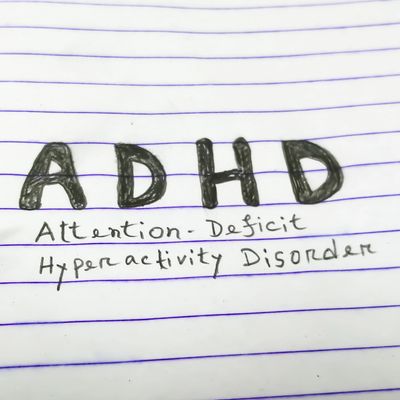ADHD (Attention-Deficit/Hyperactivity Disorder) is a neurodevelopmental condition that affects how a person pays attention, regulates impulses, and manages energy levels. It’s often first noticed in childhood, but it can continue throughout life and may not be diagnosed until adolescence or adulthood.
Core Features of ADHD
ADHD is typically characterized by symptoms in three main areas:
1. Inattention
- Difficulty sustaining attention in tasks or play
- Often seeming not to listen when spoken to
- Trouble organizing tasks and activities
- Frequently losing things necessary for tasks (e.g., keys, phone, paperwork)
- Being easily distracted or forgetful
2. Hyperactivity
- Fidgeting or squirming in seat
- Feeling restless or unable to stay seated when expected
- Excessive talking or difficulty engaging in quiet activities
- Acting as if “driven by a motor”
3. Impulsivity
- Interrupting others or speaking out of turn
- Difficulty waiting for one’s turn
- Making hasty decisions without considering consequences
To be diagnosed with ADHD, symptoms must be chronic (lasting more than six months), impair daily functioning, and be inconsistent with developmental level.
How ADHD Affects People Differently
ADHD is not a one-size-fits-all condition. It presents in unique ways from person to person due to differences in:
1. ADHD Subtypes
- Predominantly Inattentive Type (formerly ADD): People may appear quiet, dreamy, or disorganized rather than hyperactive.
- Predominantly Hyperactive-Impulsive Type: More physical restlessness and impulsive behavior; less obvious attention issues.
- Combined Type: A mix of inattentive and hyperactive-impulsive symptoms.
2. Age
- Children: May have difficulty in structured environments like school, with symptoms often seen in classroom behavior.
- Teens: Symptoms might shift toward internal restlessness, social challenges, or academic struggles.
- Adults: Often experience challenges with time management, job performance, maintaining relationships, and executive function (e.g., planning, prioritizing).
3. Gender
- Girls and women are often underdiagnosed because they tend to show less disruptive hyperactive behavior and more internalized symptoms (like daydreaming or anxiety).
- Boys are more likely to be diagnosed early due to noticeable behavioral hyperactivity in school settings.
4. Co-occurring Conditions
Many people with ADHD also experience:
- Anxiety or depression
- Learning disabilities (e.g., dyslexia)
- Autism spectrum traits
- Sleep issues
- These can mask or amplify ADHD symptoms, making diagnosis and treatment more complex.
5. Cultural and Environmental Factors
- How ADHD is recognized and treated can vary widely depending on cultural norms, access to healthcare, and societal expectations.
- In some settings, high energy and impulsivity may be viewed as problematic; in others, they may be less noticeable or even valued.
6. Strengths and Challenges
ADHD comes with both challenges and strengths. While individuals may struggle with focus, organization, and impulse control, many also show:
- Creativity
- Spontaneity
- Hyperfocus (the ability to intensely concentrate on something of strong interest)
- Resilience
- High energy and enthusiasm
Treatment and Support
There is no “cure” for ADHD, but it can be managed effectively through a combination of:
- Medication (stimulant or non-stimulant)
- Therapy (behavioral therapy, coaching)
- Accommodations at school or work (e.g., extra time, flexible deadlines)
- Lifestyle strategies (routines, reminders, exercise, mindfulness)
Support should always be tailored to the individual, with an understanding that what works for one person may not work for another.
In Summary:
ADHD is a complex, dynamic condition that affects attention, impulse control, and energy regulation—but not in the same way for everyone. It's important to move beyond stereotypes (like the “hyper little boy” image) and recognize the full diversity of how ADHD shows up across age, gender, and personality. With the right understanding and supports, people with ADHD can thrive in ways that suit their unique brains.
